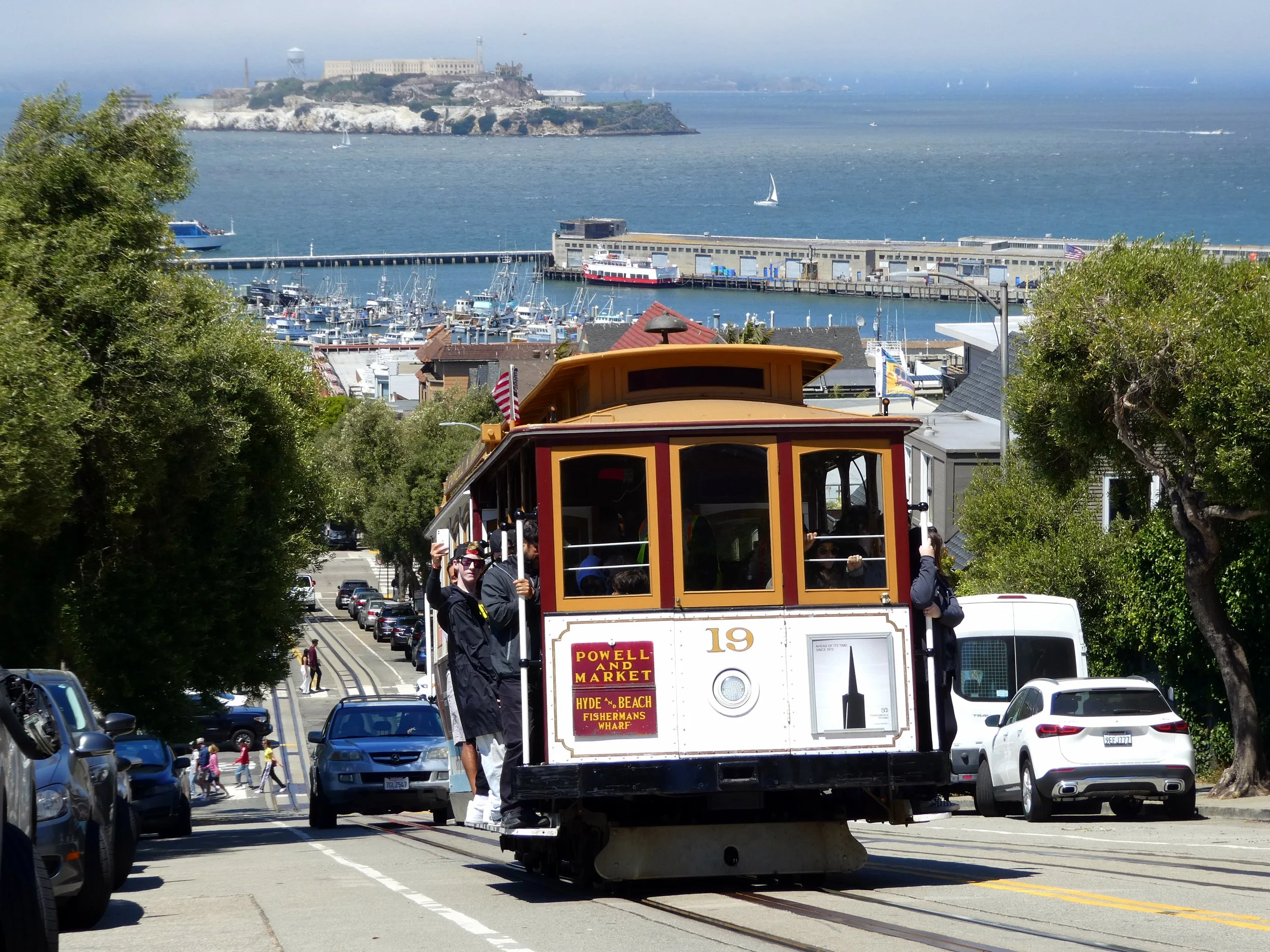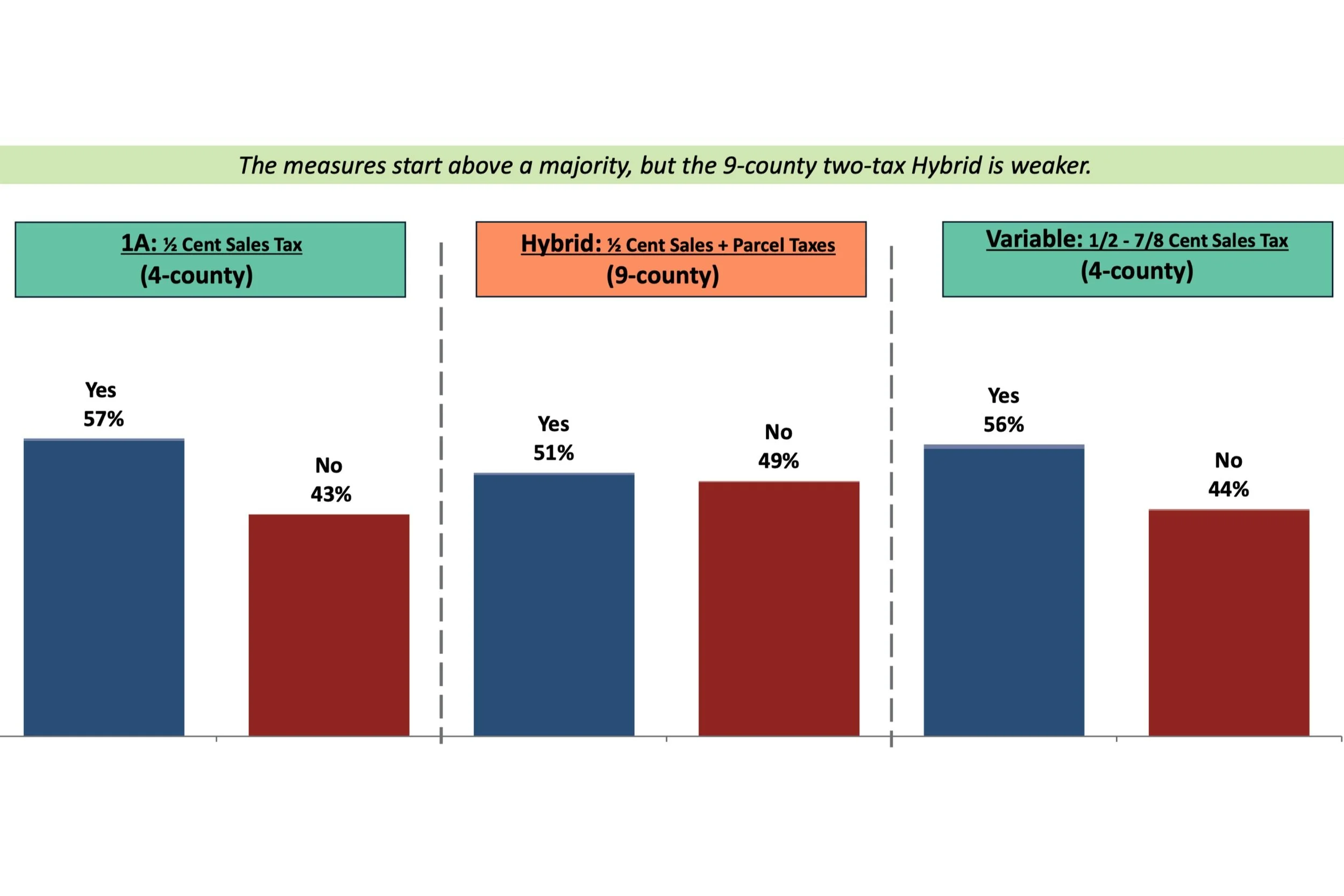In 2004, Seoul introduced transformative reforms including reorganizing its bus network, overhauling operator incentives, and introducing a unified, distance-based fare structure for buses and the metro. These boosted ridership and revenue by over 10% and ushered in a long-term “virtuous cycle” of rising investment and ridership that continues today.
Read MoreLast week, San Mateo and Santa Clara Counties inched closer toward participating in a regional transportation funding measure. San Mateo County softened its shocking position against funding seamless transit, and both counties are negotiating on governance options for the funds. The VTA board reviewed polling data which showed voters were equally supportive of a regional and local 0.5% sales tax. In its discussion, the board leaned toward participating in the regional tax at a 0.5% level, while maintaining a backup of a new 0.5% county-specific tax in 2028 that would renew and increase the local tax.
Read MoreThree San Mateo County agencies have recommended eliminating funding for transit coordination initiatives from the upcoming regional transportation funding measure authorizing legislation. This includes cutting funds for wildly popular initiatives like all-agency transit passes, free transfers, schedule coordination, and coordinated paratransit. If you live, work, or travel in San Mateo County, then we need you to speak up tomorrow, May 1st at the Caltrain and SMCTA board meetings, and at the SamTrans and C/CAG meetings next week.
Read More“If they can do it then why can't we,” said Zyjay Cruz, an undergraduate student at San Jose State University who is pushing for his university to join BayPass after UC Berkeley students recently voted to extend and expand their participation in the Clipper BayPass program. “It shows that a staggering amount of students want BayPass.”
Read MoreGreater Seoul has built one of the world’s most extensive and seamlessly integrated public transit systems, with 23 metro lines, over 700 stations, and at least 7,000 buses. What lessons can Seoul and South Korea offer California? The first in a three-part blog series.
Read MoreThe DC/Maryland/Virginia and Chicagoland regions are pursuing initiatives to bring their respective transit agencies to closer integrations, with goals to increase ridership and help address the region’s financial challenges, with lessons for the Bay Area and other regions.
Read MoreThe Palo Alto City Council approved an agreement to join the all-agency BayPass pilot, with $94,640 purchase of all agency transit passes. The City had previously participated in the single-agency Caltrain GoPass to support sustainable commuting, but found that many employees work in city locations further from the Caltrain station and/or live in places that aren’t on the Caltrain corridor.
Read MoreThis year, the California legislature is considering two bills to streamline building public transportation. SB 71 will permanently exempt sidewalk, bike lane, and bus lane projects from CEQA. SB445 sets timelines for utilities and local governments to approve permits for sustainable transportation projects, and empowers agencies to advance work should the timelines not be met. These bills will help reduce two causes that frequently delay rail and transit projects. Seamless Bay Area supports these bills.
Read MoreLast week, Senators Wiener and Arreguín announced a new bill that would authorize a regional public transportation funding measure. The first draft of the bill calls for a half-percent sales tax that would fund the regional transit agencies that face likely cuts, including Caltrain, BART, Muni and AC Transit. The proposed measure includes San Francisco, Alameda and Contra Costa counties, and allows San Mateo and Santa Clara Counties to opt in by July 31.
Read MoreParticipation in the Clipper START low-income discount program has increased by 77% since the program was standardized with 50% discounts among all transit agencies in January 2024. Now, there are plans to make the Clipper START pilot program permanent and to make it easier to join.
Read MoreUC Berkeley students will vote this Spring to adopt BayPass, the Bay Area's new unlimited, free-at-the-point-of-use transit pass, that “will transform the student experience at UC Berkeley.” Seamless Bay Area endorses the BayPass at Berkeley campaign.
Read MoreSecuring new transit operating funding from the State government was a major focus of the California Transit Transformation Task Force’s December and February meetings. The funding discussion is critical, since California historically underfunds transit compared to other states, and available funding is not enough to meet the state’s goals for ridership, climate, housing, and affordability.
Read MoreCalifornia's Cap-and-Trade program provides billions in funding for public transportation in the Bay Area and statewide. In the Bay Area, funds have supported a range of needs including major rail and bus projects, bus electrification, and student transit discount programs. Reauthorizing the Cap-and-Trade program before its 2030 expiration date is a key piece of the puzzle with statewide, regional, and local funding and reforms needed to save and improve transit.
Read MoreMTC and transit agencies have opportunities to increase transit ridership by promoting the upcoming capability to pay by credit/debit cards and Apple/Google wallets for tourists and for people taking trips to sports and entertainment who aren’t frequent transit users.
Read MoreHow can California deliver its State Rail Plan, with goals to electrify 1500 miles of rail and create a well-connected network of rail and transit across the state, in a cost-effective and timely manner? This blog post shares the video and slides.
Read MoreIn 2025, policymakers and advocates are working on a set of public transportation funding measures and policy reforms at the local-, regional-, and state-level that could work together to prevent transit service cuts, create a more rider-friendly system, and reduce greenhouse gas emissions.
Read MoreThe recently updated California State Rail Plan is an exciting and ambitious long-term vision for improved, seamlessly connected rail network across the state - but it is particularly notable because it includes, as a fundamental element, an international best practice to plan capital projects based on the service outcomes delivered to riders.
Read MoreNew polling about a potential regional transportation funding measure showed results that could pass with a citizens’ signature gathering effort, and the mood of Bay Area lifting somewhat. Voters continue to value an improved system more than just stemming cuts. All of the options polled better than 50% - the threshold needed to pass a measure with a citizens’ signature gathering effort. However, none of the options reached the two-thirds threshold that would be needed if a government agency puts a measure on the ballot.
Read More

















